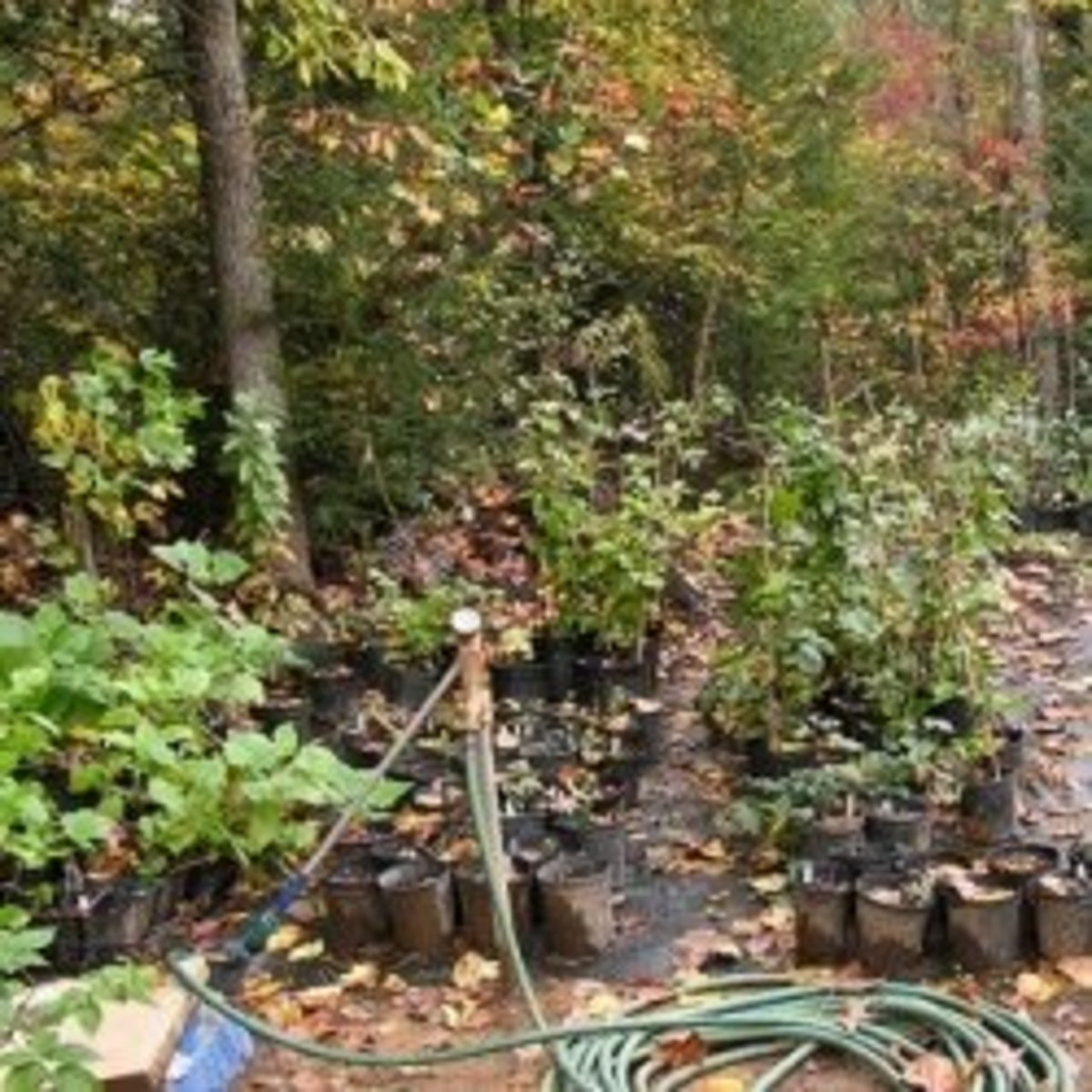- HubPages»
- Home and Garden»
- Gardening»
- Organic Gardening
Urban Farming - Can it be a Profitable Business?
Urban Farming Breathes Life back into the City.

Urban Populations are Growing around the world.
As ever more people live in cities and society becomes less tolerant of excessive carbon use in delivering our food, urban farming is in a perfect position to solve this problem while simultaneously creating a beneficial new industry.
According to UN figures by 2050 nearly 70% of the world's population will be living in cities. The figures in many parts of the world are already much higher than this with over 80% living in urban areas in the USA and more than 70% in continental Europe.
This will put a great strain on food distribution networks that are already working at near full capacity. As a result the miles that food has to travel from farm to plate can be astronomical but there is a growing demand for solutions to address this problem; and urban farming may fit the bill.
Research shows that the average item of food from a supermarket has travelled 1500 miles from where it was grown to get to the store. Inevitably, the further the food has to travel the less tasty and fresh it will be. Add to this the potential carbon footprint that these kinds of logistics produce and we have two very good reasons to take another look at this approach to food distribution.
In many countries where the economy is tight and jobs can often be scarce, urban farming offers people the opportunity to turn a small unused space in their home or backyard into a highly profitable and socially beneficial enterprise. As well as individual enterprises small community farms are also a viable way to produce food locally, even within a city.
Organically Grown Food Carries a Premium Price Tag.
Organically grown, locally sourced food carries a high premium with it and by leveraging the latent demand for such produce you can become very successful. Imagine a future of highly specialised networks of small scale food producers spread throughout the cities.
This network would provide high quality food and create an abundance of jobs and supporting roles that could fill a gap that is opening up in the jobs market as many vocations are set to go extinct with the rise of AI and robotics. However small, highly specialised farming businesses will still be able to compete.
Many of the urban farming models are so efficient that they defy the seemingly immovable natural law of the economies of scale that large corporations have used to monopolise much of the food industry.
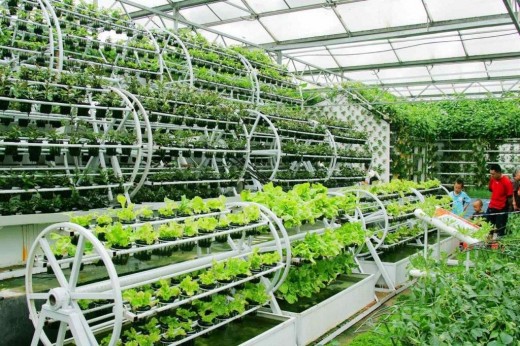
What Exactly is Urban Farming ?
Urban farming is the practise of growing high intensity food produce in very small spaces within the limits of the city.
The techniques and methods are already well refined as witnessed by success stories across the globe.
Urban farming can help to improve people's access to freshly grown food and help to combat so called 'food deserts' within cities. Food deserts, within the context of the city, are areas where there is little or no access to fresh food for miles around.
A famous example of a food desert is the city of Los Angeles in the USA. In many of the suburbs residents cannot buy fresh, yet alone organically grown food, without travelling for several miles by car or public transport. Many of the poorer residents do not have access to a car and often end up relying on a diet that is almost entirely made up of processed food, for which their health inevitably suffers.
Urban farming can help to tackle the problem of food deserts within cities, provide new jobs and help people to reconnect with the processes of growing food.
High intensity Greenhouses are a great choice in the city's outskirts.
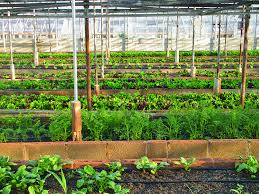
Do I Need ¼ Acre or more of land available to me to be Successful in the Urban Farming Niche ?
The short answer is no, you do not! If you carefully select the products you want to sell and focus on growing only a few, or even one, high yielding, fast growing and high value crop then you can start and run a successful urban farming business out of your basement!
Microgreens being grown under lights in highly efficient shelving units.
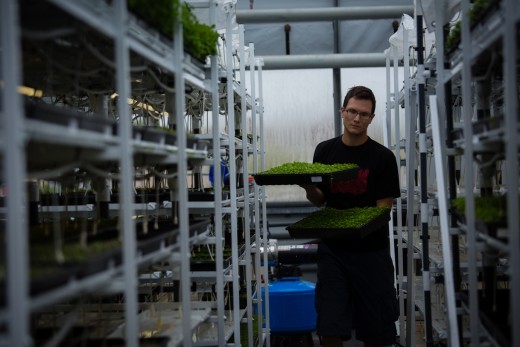
MicroGreens.
Microgreens are a great crop to start out with if you want to break into the emerging urban farming market. Microgreens will be ready to harvest between 14 - 21 days after you plant your seeds. This extremely fast growing time allows for great turnarounds in a limited space.
There is a broad spectrum of microgreens you can grow that includes most varieties of vegetables and all kinds of salads. This variety gives you versatility to adapt to the local market demand as well create your own combinations.
Popular microgreens to grow include salads, sunflowers, beets, chard and cilantro.
You could also choose to specialise in one particular type of microgreen, for example sunflowers or wheat grass and really focus in and capture your local market.
Selection of Microgreens.
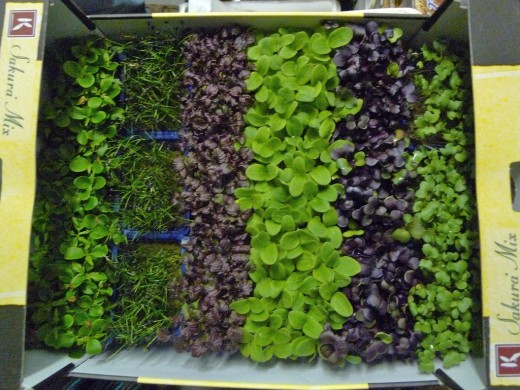
Microgreens can be very profitable.
Microgreens are usually grown in shelves under grow lights. They can be grown indoors where they tend to do best in a controlled environment. You can build your set up in your own basement, a well insulated outdoor shed or even in your conservatory.
Potential profits are significant, with 12x18 inch trays retailing for up to $20 each. Given that you can grow a tray in 10-21 days (depending on the type of seeds you choose) this is a highly efficient business model. This means that, grown on shelves under lights, you could be producing thousands of dollars a month worth in a very small space.
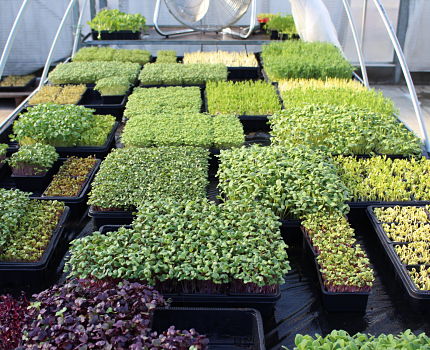
Who would your customers be?
Microgreens are very healthy addition to salads and other foods. Microgreens contain higher levels of nutrients than their full grown counterparts. Microgreen broccoli for instance contains up to 70% more nutrients per gram than a fully grown broccoli plant.
Potential customers for your microgreens business includes restaurants and cafes, customers at farmers markets and even gyms. You can also set up a subscription service to sell to individual households.
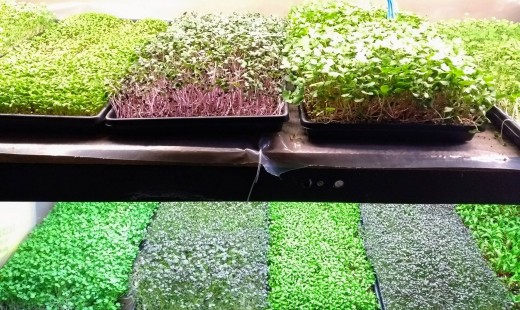
How to Grow Microgreens.
Gourmet Mushrooms are a very high value crop.
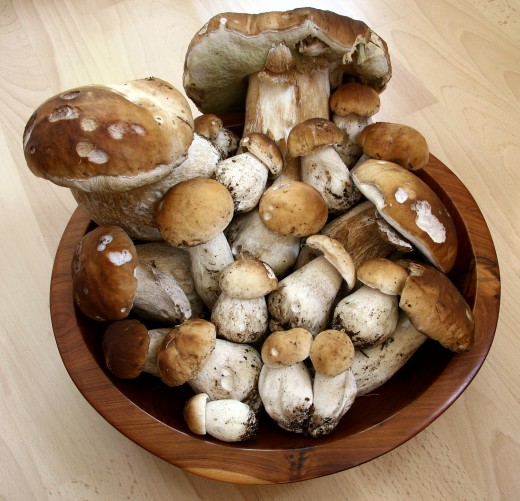
Gourmet Mushrooms.
Growing mushrooms for food is also a very profitable business model however there are serious health and safety issues that you need to be aware of before you set out.
Mushrooms must be grown in highly controlled environments to ensure that they are safe. All the growing mediums that you must use to grow whether its saw dust or hardwood, must be sterilised. You can buy pre-sterilised mediums but this is a cost you should calculate before you begin.
But the rewards are well worth it, with gourmet mushrooms retailing at very high rates you can sure that your investment will pay off. If you choose to grow oyster mushrooms, which are very popular, then within a 100 square foot space you can easily be producing 2,000 pounds of mushrooms per year with a retail value of about $15,000.
More valuable mushrooms can sell for significantly higher rates than this but on the downside can be harder to successfully grow.
If you are just starting out then keeping it simple is probably the best policy so going with something like oysters mushrooms is your best bet.
Mushrooms will take longer to grow than microgreens for example, but once you have your business up and running you will have a very high value crop at your disposal. High end restaurants are always looking for local suppliers of gourmet mushrooms and if you can secure a few contracts you will be able to make a good living.
Growing mushrooms in sterilised straw.
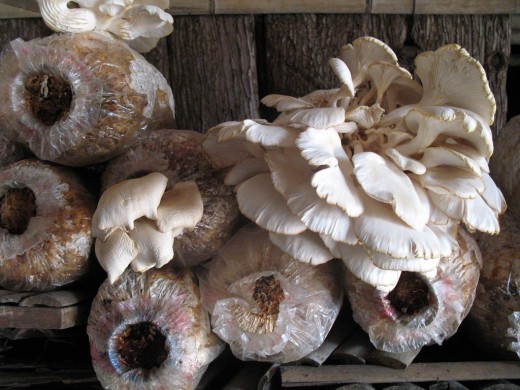
Mature Apple Trees will produce fruit for decades.
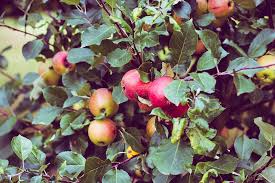
If you have a little more space to work with, why not set up a Fruit Tree Nursery in your backyard?
This is an ideal option if you have a backyard and want a more hands off business. Setting up a small fruit tree nursery is much easier than you may think. You simply need to buy young saplings, about 1 year olds, and grow them to between 4 and 7 years old. By doing this you can make a significant profit but it’s going to take several years!
To illustrate let’s use the example of apple trees.
If you buy a young apple sapling, aged 1 year old, it will cost you around $25-50.
Once you get it home you will want to plant it in a large porcelain pot with excellent compost and rich soil. Set it in your backyard and your work is pretty much done until you want to sell it.
In three or four years time you’re apple sapling will be a young tree and it’s value with have shot up to around $250! It won’t bear it’s first fruit until it’s 4-7 years old depending on the variety and conditions.
Once it is ready to start bearing fruit it’s time for you to sell!
If you had bought 100 apple tree saplings and left them to mature in your garden they would be worth around $25000.
During the intervening years you would be able to source potential buyers.
Repeat this process each year and over time you will build up a good sized outdoor warehouse of fruit trees. Of course you don’t need to buy 100 at a time, you could just buy ten or twenty saplings each year to create a nice side income for yourself.
Urban Farming and the Future.
There are a multitude of other choices if you decide to go into the business of urban farming and of course you can also adapt these models and scale down the production to supply yourself. Urban farming is a genuinely viable business plan for almost anyone, regardless of their budget, and the future looks bright for this small but fast growing modern cottage industry.



